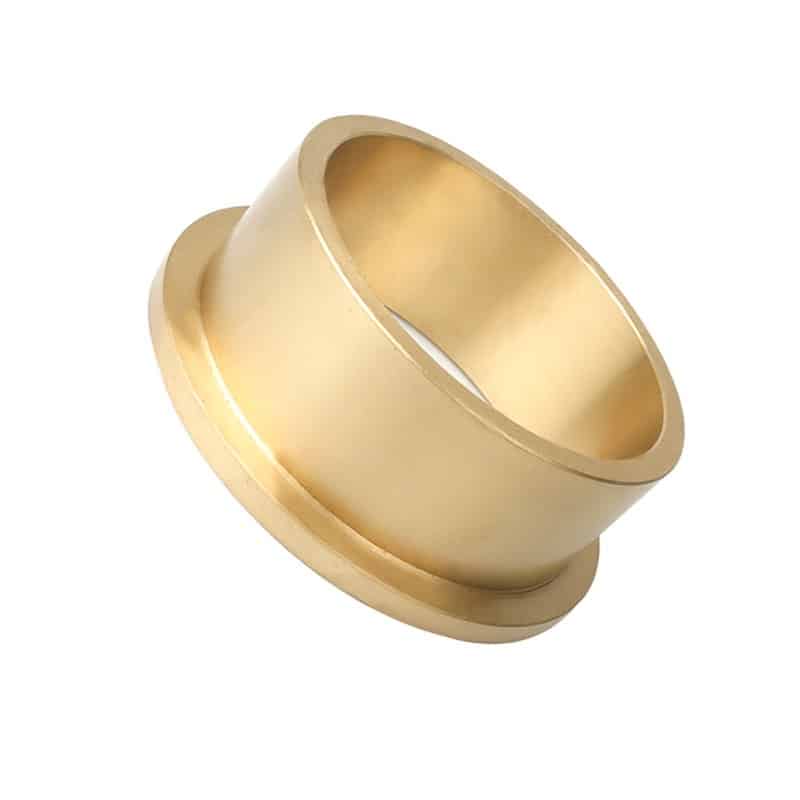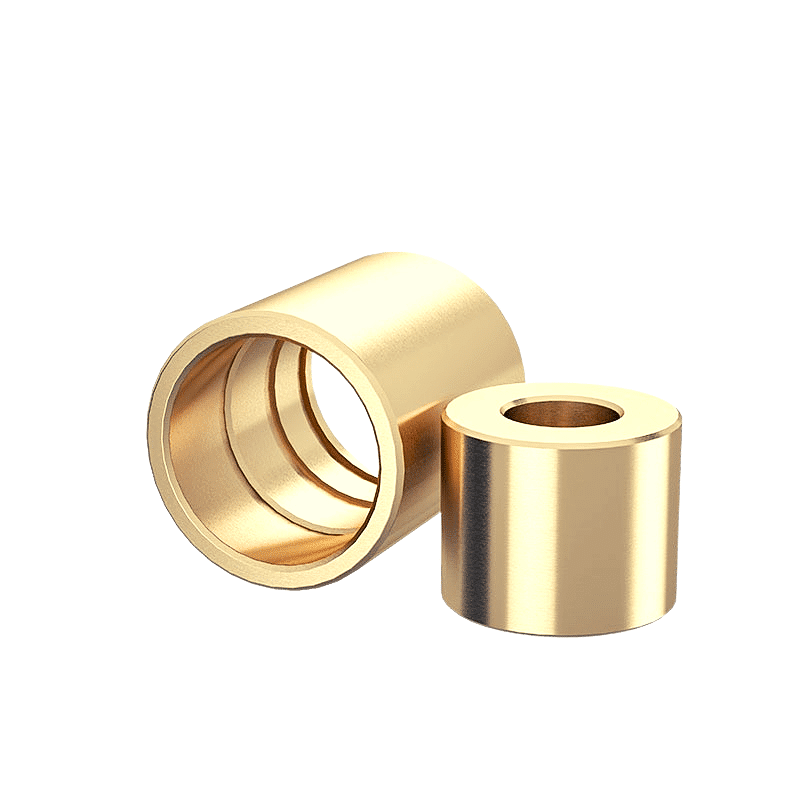CuSn12 machined bushes, Material: 2.1052 (CuSn12) Services You Can Trust
CuSn12 is a type of bronze, which is a metal alloy primarily composed of copper, usually with tin as the secondary component. In the case of CuSn12, the alloy consists of approximately 88% copper and 12% tin. This specific ratio provides the alloy with certain mechanical and physical properties that make it suitable for various applications.
Experience
CuSn12 is a type of tin bronze under the German casting standard for tin-nickel bronze.
Bronze Bearing Solutions
The applicable standard is DIN EN 1982-2008 for copper and copper alloys, ingots and castings, specifically CuSn12.
Online Support
CuSn12 alloy is known for its good wear resistance and excellent casting properties, making it particularly suitable for the production of castings that require a high level of hardness, such as bearing bushings, gears, and other components subject to friction and wear.
CuSn12 machined bushes, Material: 2.1052 (CuSn12)
The machined bushes made from this material are typically used in areas where high strength, good corrosion resistance, and excellent wear resistance are required. These could include applications in the automotive industry, for example, where bushes are used in areas of high friction and stress, such as in suspension or steering components.
The material 2.1052 is a reference to the German standard DIN 1705 for bronze. In this case, it designates the same CuSn12 alloy. This kind of coding is often used in technical specifications to ensure that the exact materials used are clearly understood, regardless of language or regional differences in naming conventions.
Specialist in Tin Bearing Technology
A specialist in tin bearing technology would be an individual or organization with a high level of expertise and experience in the design, manufacture, application, and maintenance of bearings made from tin-based materials.
Tin is often used in bearing technology as a component of various alloys, most commonly bronze (copper-tin) and bimetal (tin-lead-copper). It provides properties such as low friction, good wear resistance, and excellent compatibility with lubricants. These characteristics make tin and tin-alloy bearings suitable for a wide range of applications, from automotive engines to heavy industrial machinery and beyond.
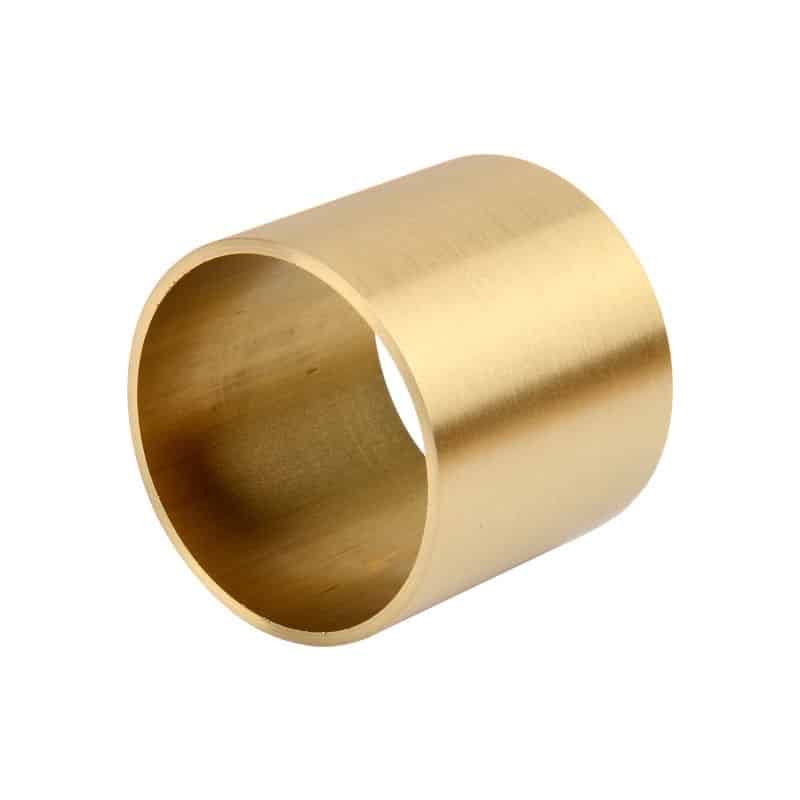
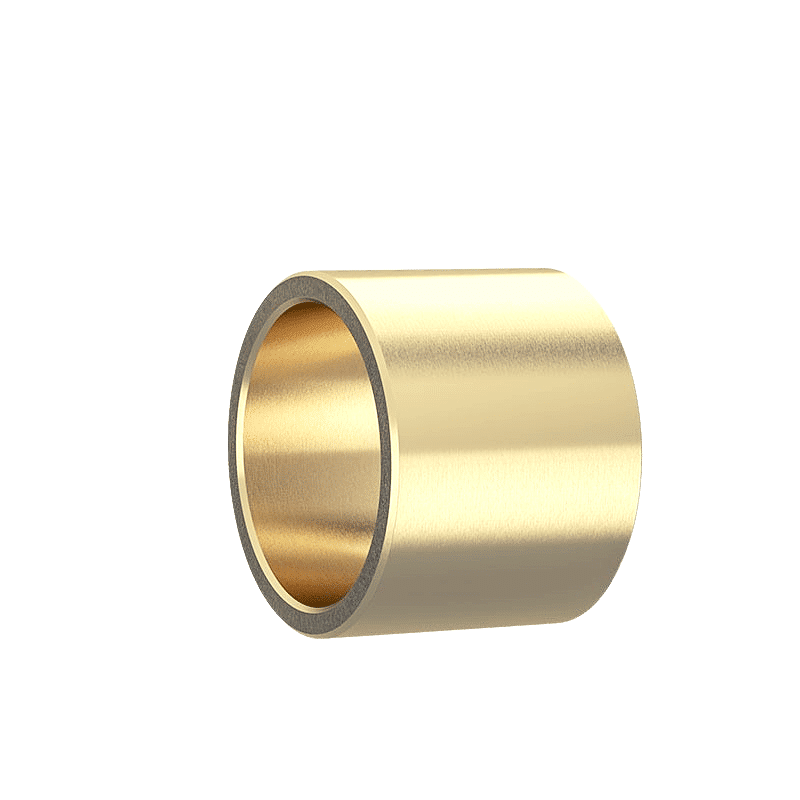
Alloy CuSn12 Bearing Bushing
A CuSn12 bearing bushing is a mechanical component fabricated from the CuSn12 alloy, which is a specific type of bronze composed of roughly 88% copper (Cu) and 12% tin (Sn).
Bearings are critical elements in many mechanical systems, reducing friction between moving parts, providing support for rotational or linear movement, and often contributing to the precise alignment of the components within the system.
A bushing is a type of bearing that is typically a simple cylinder or sleeve that fits between two parts of a machine to reduce friction and wear. Bushings made from CuSn12 bronze are commonly used in high-stress applications due to their excellent resistance to wear and corrosion, good load-carrying capability, and suitability for both low and high-temperature environments.
These characteristics make CuSn12 bearing bushings suitable for various applications, including automotive and industrial machinery components, hydraulic and pneumatic systems, and more. The specific alloy, CuSn12, is selected for its properties that combine the natural corrosion resistance of copper with the hardness and wear resistance imparted by the tin.

Bronze CuSn12 Cast Bronze Bushings without Oil Groove …
CuSn12 cast bronze bushings without an oil groove are mechanical components made from a specific bronze alloy known as CuSn12. This alloy is composed of approximately 88% copper and 12% tin, giving it excellent corrosion resistance, high wear resistance, and superior strength.
These bushings are essentially simple cylindrical or sleeve-like parts that are fitted between two components of a machine to reduce friction and wear. They are often used in applications that require high load-bearing capacity and where extreme conditions like high temperatures or corrosive environments may be present.
The term “cast” in “cast bronze bushings” refers to the manufacturing process used to produce these components. In this process, the CuSn12 alloy is melted and then poured into a mold in the shape of the desired bushing. Once the molten metal has cooled and solidified, the bushing is removed from the mold and is then ready for use.
The phrase “without an oil groove” indicates that these bushings do not have grooves or channels that are often designed into the surface of some types of bushings to distribute lubricating oil more evenly. In some applications, these grooves are not necessary, either due to the type of motion (such as oscillating rather than continuous rotation), the use of self-lubricating materials, or the design of the surrounding components.
CuSn12 cast bronze bushings without an oil groove are specialized mechanical components that are valued for their robustness and versatility in a variety of demanding applications.
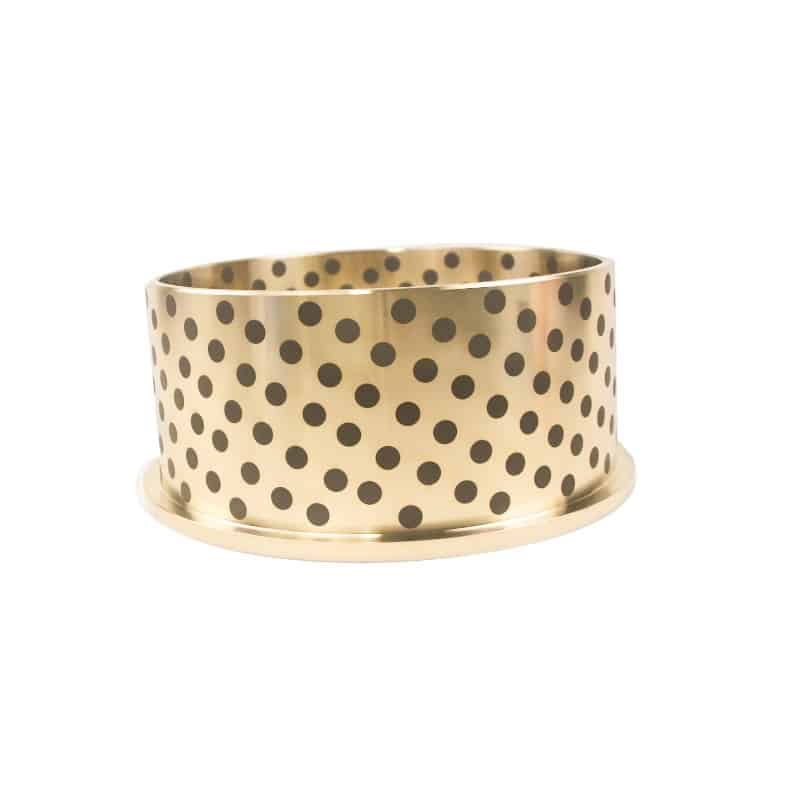
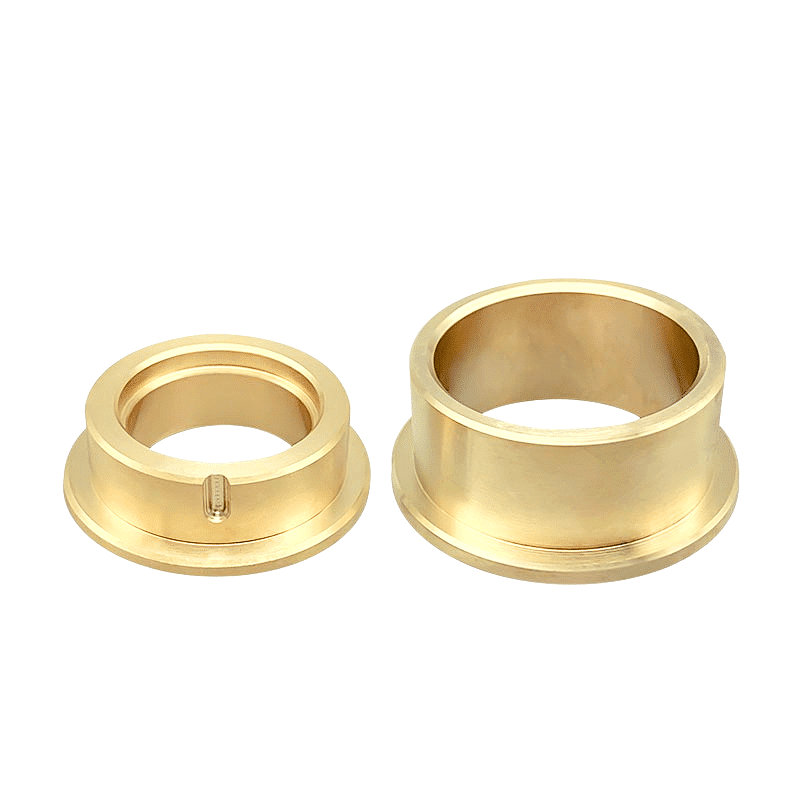
CuSn12 Tin Bronze Bushes with M2, milling
CuSn12 is a tin bronze alloy composed of approximately 88% copper and 12% tin. It is widely known for its high strength, good wear resistance, and excellent corrosion resistance.
Tin Bronze Bushes made from CuSn12 are commonly used in mechanical systems to reduce friction between moving parts and provide support for rotational or linear movement. They are suitable for high-stress applications due to their excellent material properties.
When these bushes are described as having an “M2 milling” and an “M2 thread,” it means they have been processed through a specific machining operation.
“Milling” is a machining process where a rotating cutting tool (the mill) removes material from the workpiece to create a desired shape. In this case, the M2 specification could possibly refer to the size of the milling cutter used, but without more specific context, it’s hard to be certain.
Milling bronze bushes
machining finished parts.
“M2 thread” refers to the thread size created on or in the bushing. The M designation refers to a metric thread, and the number following it (in this case, 2) represents the nominal diameter of the thread in millimeters. Therefore, an M2 thread has a nominal diameter of 2mm.
The term “machining finished parts” refers to the fact that these CuSn12 tin bronze bushes have been completely processed and are ready for use in their intended application. This could involve various machining operations like turning, milling, drilling, or threading to meet precise dimensional and surface finish specifications.
To sum up, CuSn12 tin bronze bushes with M2 milling, M2 thread, and machining finished parts are high-strength, wear-resistant components that have been meticulously processed to precise specifications and are ready for installation and use in a range of demanding mechanical systems.
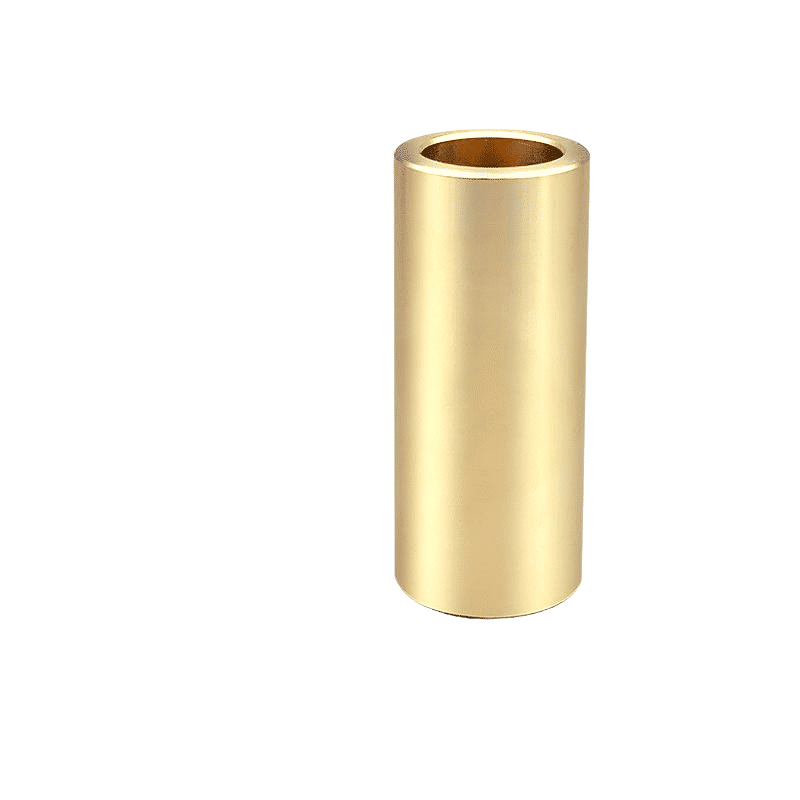
Bronze Bushing– Materials & norms
Bronze bushings are commonly used machine components designed to reduce friction and wear between moving parts. They’re typically cylindrical or sleeve-like in shape and provide a bearing surface for rotary applications. Materials:
The primary material used for bronze bushings is, of course, bronze, which is an alloy primarily composed of copper and usually tin. Different types of bronze are used depending on the application requirements. Norms:
The norms (or standards) associated with bronze bushings vary by country and region. They set guidelines for material composition, mechanical properties, and often dimensional tolerances. Here are a few examples:
- ASTM (American Society for Testing and Materials): ASTM B505 for continuous cast bronze, ASTM B271 for centrifugal cast bronze, and ASTM B22 for tin bronze are all relevant.
- DIN (Deutsches Institut für Normung): In Germany, DIN 1705 specifies tin bronze castings.
- EN (European Norms): EN standards such as EN 1982 govern the composition and mechanical properties of bronze alloys in Europe.
- BS (British Standards): In the UK, specifications for bronze bushings are often given according to BS standards.
It’s important to note that the appropriate material and standard for a particular bushing will depend on the specific requirements of the application, including factors such as load, speed, operating temperature, and environmental conditions. A good understanding of these factors is key to the successful design and use of bronze bushings.
CuSn12 bronze bushing parts for piping solutions
CuSn12, also known as 2.1052, is a type of bronze that is frequently used for the production of various mechanical components such as bronze bushes or bearings due to its excellent properties. These include good wear resistance, low friction, high strength, and corrosion resistance.
In the context of piping solutions, CuSn12 bronze bushes can have several applications. Here are a few examples:
Support Bearings: These bushes can be used as support bearings in the pipework. They provide a strong, wear-resistant point of contact that can take a lot of weight. This is particularly useful in systems with heavy flow rates where pipes may be under strain.
Pump and Valve Components: Given their corrosion resistance and strength, CuSn12 bronze bushes can be utilized in pumps and valves within the piping system. They can resist the corrosive effects of various types of fluids and stand up to the mechanical stress of pump or valve operation.
Sealing Applications: Bronze bushes can also be used in applications requiring a good seal in pipework. They can be found in pipe joints, fittings, and in some types of mechanical seals.
High-Pressure Applications: Due to their high strength and resistance to deformation, CuSn12 bronze bushes are ideal for high-pressure applications in piping systems.
Industrial Plumbing: In various industries like oil and gas, chemical, power generation, etc., CuSn12 bronze bushes can be applied in the plumbing infrastructure where robust materials are required to handle harsh environments.
Remember that the specific application would depend on the design requirements, environmental conditions, and the specific characteristics of the piping system in question.
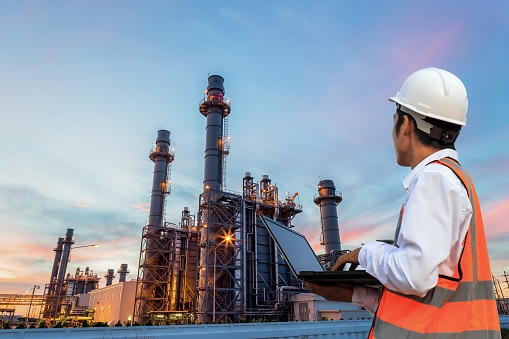
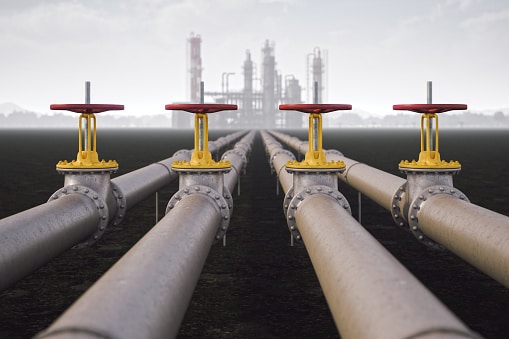
Hydraulic lift cylinder bronze bearing parts
A hydraulic lift cylinder consists of several key components, including the piston. The piston, often made of bronze in certain types of cylinders, plays an essential role in the functioning of the system. Here is some more detail on the various parts and their functions:
Piston: The piston is a disc or short cylinder that fits tightly within the cylinder tube. In a hydraulic lift cylinder, the piston’s movement is used to generate force. The hydraulic fluid acts on the piston surface, which moves under the fluid pressure. If the piston is made of bronze, it’s because bronze has good load-bearing capacity, resistance to wear and corrosion, and it offers excellent sliding properties, which are all important attributes for this function.
Cylinder Barrel: The cylinder barrel is typically a seamless tube within which the piston moves back and forth. It houses the pressure and the piston. The inside surface is finished to a precise size and finish to provide a sealing surface for the piston.
Cylinder Base or Cap: The base (bottom) and cap (top) of the cylinder are usually bolted or threaded to the cylinder barrel. The base may have a hydraulic fluid port.
Cylinder Head: This is attached to the end of the cylinder barrel that has the piston rod extending out of the cylinder. The head contains a bearing for the piston rod and seals to prevent the leakage of hydraulic fluid.
Piston Rod: The piston rod extends from the piston to the outside of the cylinder tube. The rod moves back and forth as the piston is actuated. The outer end of the rod can be attached to the load that is being moved.
Seals: Seals are used to prevent the leakage of hydraulic fluid between the piston and the cylinder barrel and also at the head where the piston rod exits the cylinder.
Ports: Ports are the inlets/outlets of the cylinder where the hydraulic fluid enters or leaves. The position and control of the fluid through the ports determine the movement of the piston.
Understanding these parts and their functions can help in troubleshooting hydraulic lift cylinders or when designing systems that utilize these components. The choice of materials, such as bronze for the piston, will often depend on the specific demands of the system such as load, speed, pressure, and environmental conditions.

